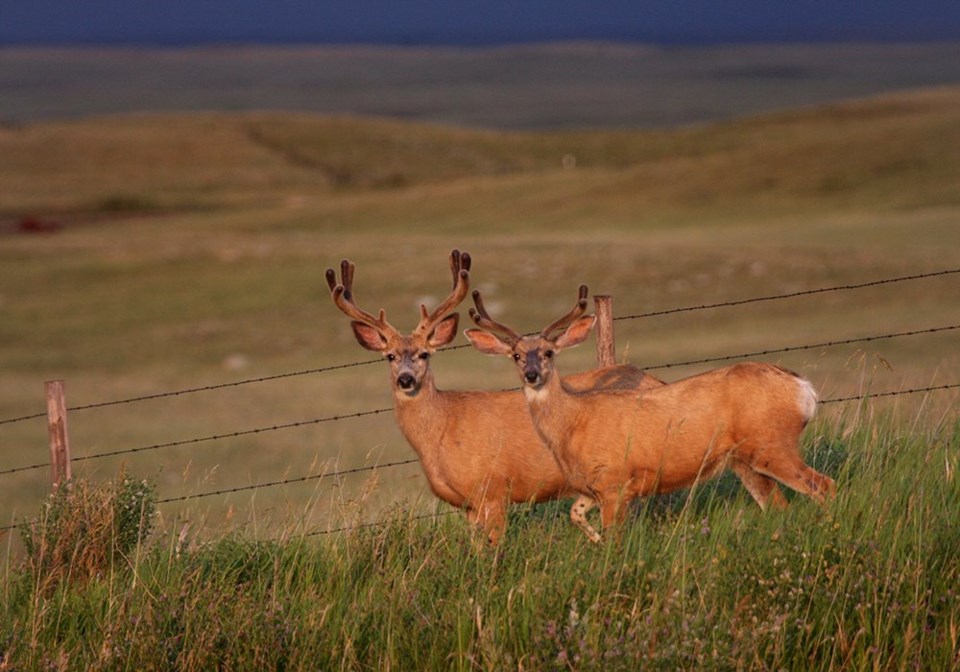Manitoba has restricted hunting along the Saskatchewan border in an area stretching south of Roblin to Asessippi Provincial Park, following the discovery of the positive case in a mule deer near Lake of the Prairies last month.
“We had a standing plan and suspected this day would come,” said Rob Olson, director of Manitoba’s wildlife enforcement branch.
Olson said Manitoba has opened an incident command centre and has undertaken an aerial survey of deer, moose and elk in the areas surround Lake of the Prairies.
“Reducing population density of cervids in the infected zone is a given. I think that’s going to have to happen,” said Olson.
He said wildlife officials will be sampling cervids in the area of the first case to determine how widespread the disease may be in the region to determine the size of the herd reduction that could be required to stem the spread.
The effort will require buy-in from stakeholders in the region, said Olson.
“We have to engage hunters, local landowners, producers, reeves, First Nations, Metis – you’ve got to include everybody.
“You have to bring everybody into the challenge and you have to create that sense of a common enemy here. It’s to everybody’s benefit to stop it from spreading.”
The province’s first case of CWD comes after Alberta recorded more than 900 cases last year and Saskatchewan saw more than 450 positive results in 2020. The disease is found primarily in mule deer but also white-tailed deer and to a lesser extent, moose and elk.
CWD was first detected in Saskatchewan in wild deer populations in 2000 and Alberta in 2005.
The latest research suggests CWD is transmitted through the saliva and urine of infected cervids and can remain in the soil for years, possibly up to a decade, and infect healthy animals grazing on those areas.
Tyler McCann, Canadian Agri-Food Policy Institute’s (CAPI) managing director, said CWD poses a significant threat in the medium and long term.
“One of the unfortunate realities with CWD is that there is a lot that we don’t know about the disease,” said McCann. “There is a significant need for research and study to better understand the disease, how it’s transmitted and the potential impacts on human health.”
Some other countries have taken steps to reduce imports of crops from areas with high CWD infections.
“That probably doesn’t mean a lot today in a Canadian perspective but as the science and our understanding of the disease increases, that may change,” said McCann.
A report commissioned by CAPI highlights the potential for the disease to become a danger to the agricultural industry if it continues to spread.
The report suggests 10 policy recommendations, ranging from increasing surveillance programs, to more severe actions such as soil remediation in areas known for high cases of CWD, and drastic actions such as the closing of cervid farms.
“We have the opportunity to try to get ahead of it and we should take that opportunity,” said McCann.
Judd Aiken, CWD researcher at the University of Alberta’s Centre for Prions and Protein Folding Diseases, said he expects more cases to be found in Manitoba.
“Whenever you have a positive, the disease has spread further than that,” said Aiken.
Isolating specific cases in a cervid population with low infection rates can be difficult, he said, which can exacerbate the problem because of the lengthy incubation period of CWD before symptoms are seen in animals.
Herd reductions can present issues with hunters due to ethical issues of mass killing of animals and with no guarantee that it will eradicate the disease, said Aiken.
If the goal is to totally eliminate the disease, he said a cull probably won’t be enough.
“If the goal is to slow the disease down considerably and the spread, I think culls can work.”
A herd reduction of wild deer in Alberta following the first cases found in the wild population was attempted in 2007 but hasn’t been repeated.
“The problem is we don’t have a way of controlling it,” said Aiken.
He and McCann stress that more research funding is needed.
“We’ve learned a lot about this disease over the past 10 years but we do not have a cure. We do not have a demonstrated way of reducing infectivity levels from the environment,” said Aiken. “The problem with CWD is there is so much we don’t know.”

